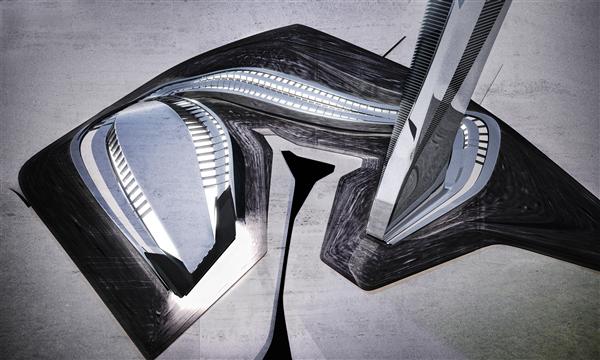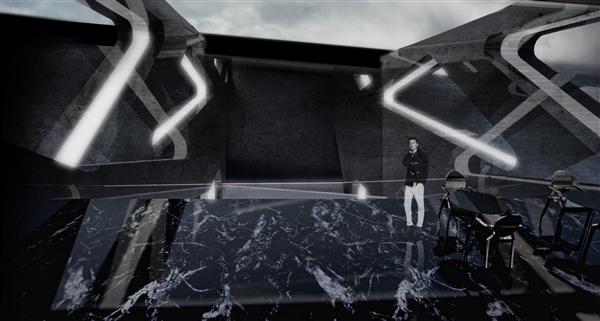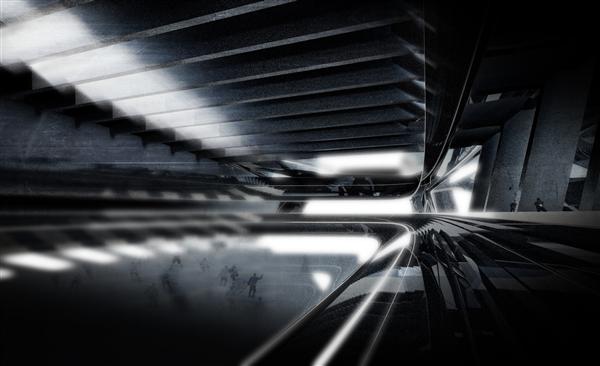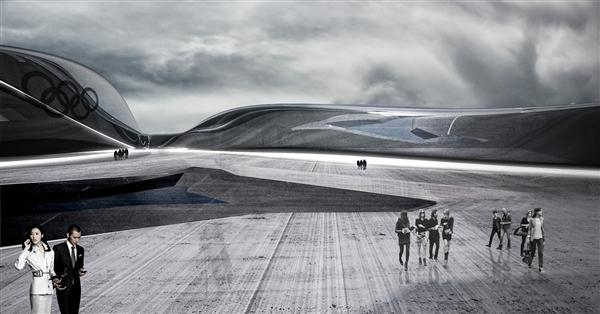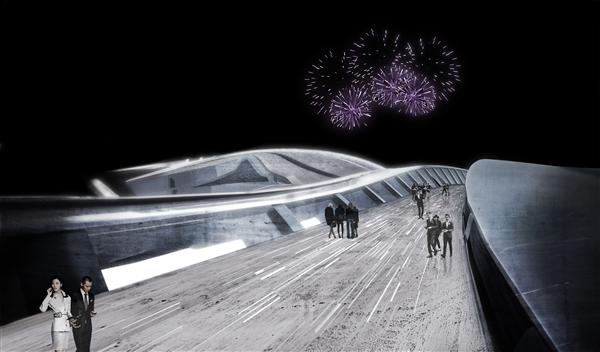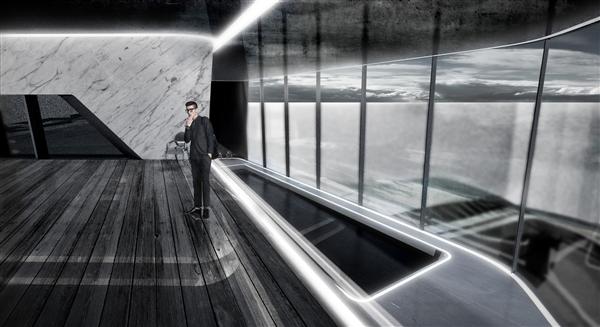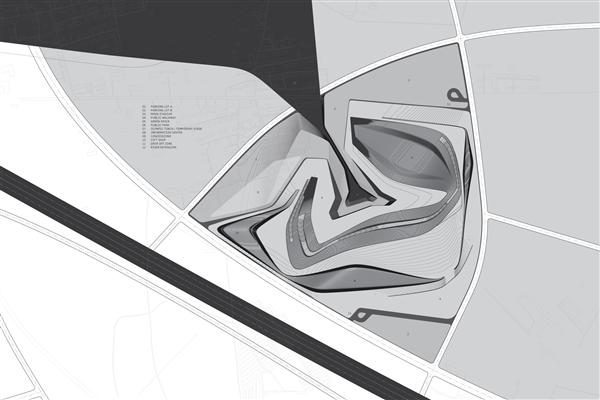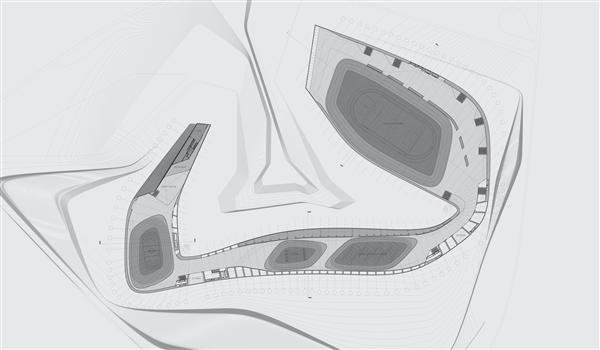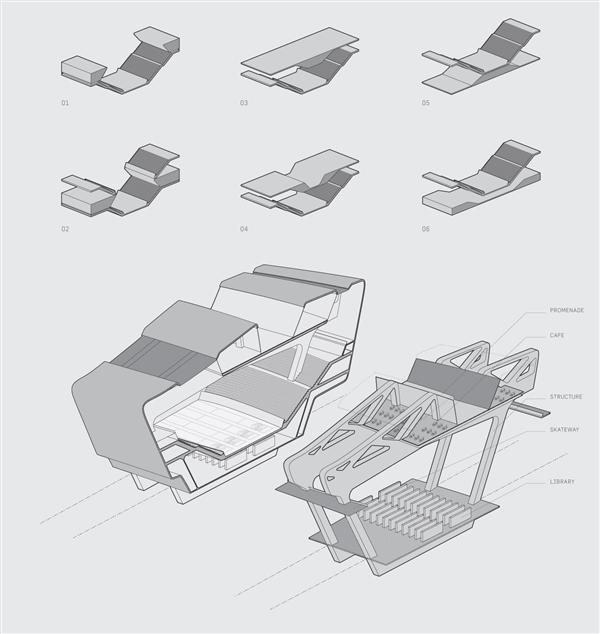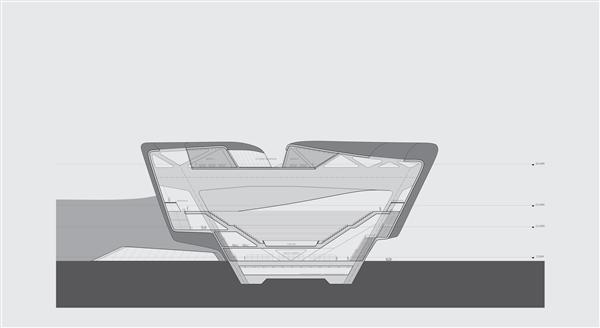Super-Stadium is a proposal designed by Alan Lu for an Olympic complex for Harbin’s bid for the 2022 Winter Olympics that seeks to integrate the multitude of Olympic arenas and villages into one continuous entity, allowing for a seamless transition between programs and events.
With the economic burdens of hosting the Olympic games a key issue in the local and global economy, the proposal attempts to inject the current model of sporting arenas with a social and cultural initiative. Thus, the building itself becomes a series of typological layers, with the ground floor programmed as a cultural landscape with libraries, museums, convention halls, and screening rooms. The layer above exists as the main sports level with four large multiuse arenas, and the upper most layer becomes a public promenade that weaves through the landscape lines with retail stores and cafes. The layers are connected visually through shifts in section that allow users to watch the sporting events from other programs and vice versa. The end effect is one of specialized spaces that resist the urge for unprogrammed space to go unused, yet still inform each other spatially and visually. The Olympic village itself is transformed into a vertical tower, tailored for the athletes during the games, but easily converted to valuable real estate once the games are over.


